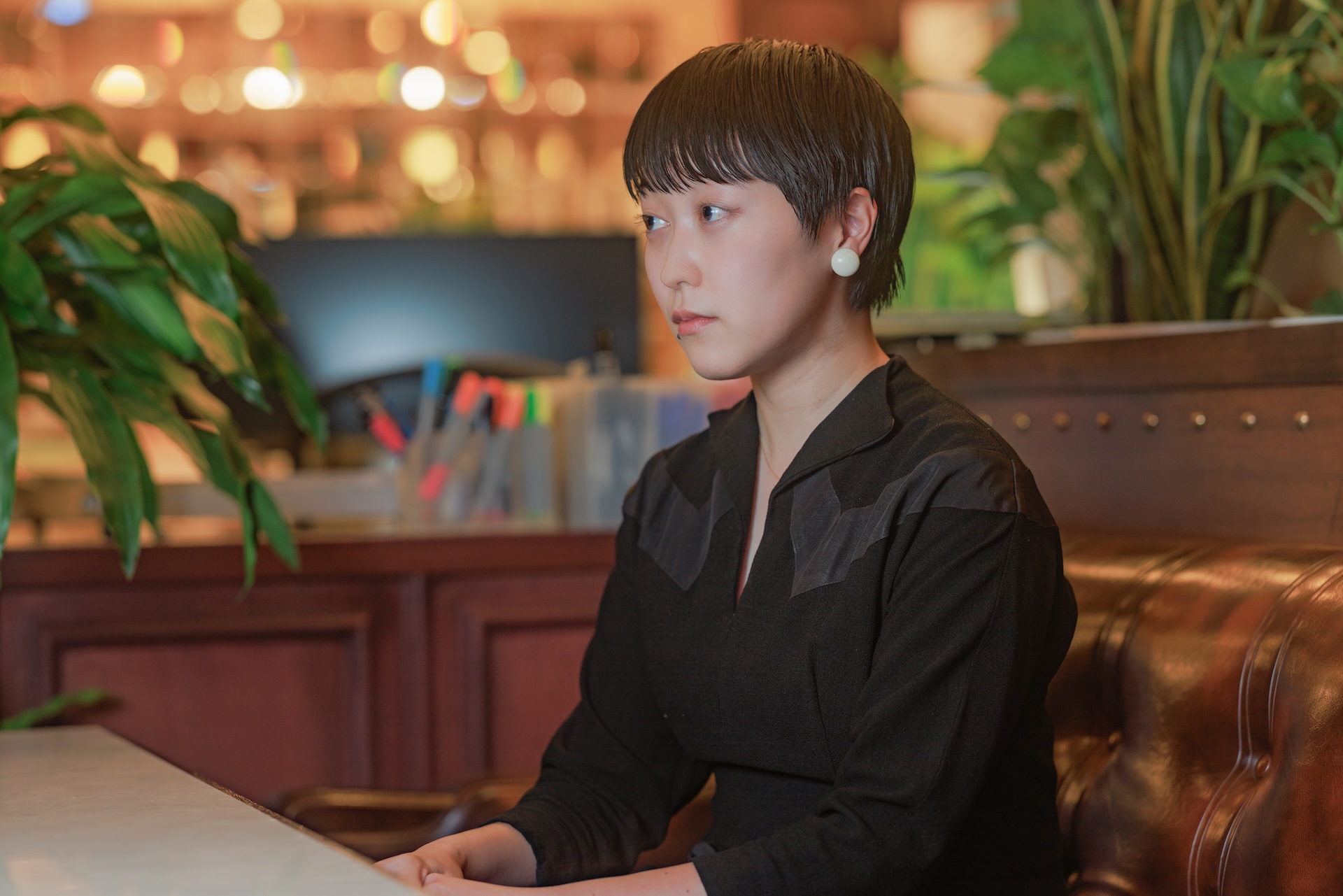
A job that doesn’t fit within the confines of your imagination
When did you join Kaikai Kiki?
I joined as a new graduate in April 2020.
What made you decide to join Kaikai Kiki?
I attended university in Kyoto, and at that time, I was pursuing the typical job-hunting process, aiming for companies in Tokyo, primarily applying for positions at large Japanese corporations. Thankfully, I received a job offer from a major company, which gave me some peace of mind, so I decided to also apply to a few companies in the art industry, in which I was genuinely interested. Among those companies, Kaikai Kiki stood out as a well-run organization where I could learn from senior staff, and it offered a decent salary. I felt that, beyond being able to move to Tokyo, I could thrive better in the art world, which I love, than in an industry I had little interest in. So after I received a job offer, I decided to join Kaikai Kiki.
What are your impressions after joining Kaikai Kiki?
I was first assigned to the management team, which primarily handles the artist management of Takashi Murakami. There were many long-standing employees, so I had a supportive environment for learning from seniors after joining. To be honest, however, the reality was much more challenging than I had imagined, with completely unexpected developments occurring daily. One memorable experience was that, having joined the company during the pandemic, the first task for us new graduates was to make masks at the Miyoshi studio. In retrospect, making the masks was a good way to learn Mr. Murakami’s process of producing works, albeit on a smaller scale.
What kind of duties are you in charge of?
I now oversee Kaikai Kiki Gallery as a whole and manage our official social media accounts. The gallery work consists of three main aspects: organizing exhibitions at our own gallery, participating in art fairs, and working with our customer. Our primary job is to exhibit and sell works by artists affiliated with Kaikai Kiki. Therefore, the tasks are varied, including promotion and publicity, installing and de-installing exhibitions, packing and transporting artworks, and communicating with artists and clients. It’s a mix of desk work and on-site work.
Recently, we have had an increase in new projects, and there was a concern that we weren’t fully utilizing social media, so I have been involved in a company-wide cross-sectional improvement project. Kaikai Kiki Gallery’s Instagram account has a large following, second only to Takashi Murakami’s personal account, so we focus on promotion and publicity there.
Please tell us about your daily routine.
There really is no fixed routine as the tasks change daily, but I start by arriving at the office in Motoazabu at 8:50 am. I first make a to-do list for the day and report it to Mr. Murakami, along with the tasks of the entire team. This helps in organizing both my tasks and the team’s tasks. After that, I work through the tasks, creating documents, compiling data, addressing problems that arise, and handling unexpected issues—every day is quite chaotic.
While desk work is the norm, the amount of on-site work increases before art fairs or exhibitions for setup and dismantling. I often find myself heading home just before the last train of the day.
What is the most difficult thing about working at Kaikai Kiki?
It might seem obvious, but the gap between Mr. Murakami’s visions and what I am able to see is so vast that it’s often challenging for me to understand. Bridging that gap with imagination and further my comprehension is difficult. Additionally, things progress at breakneck speed, making it hard for me to keep up.
I make mistakes every day as well, and things often go wrong, but I learn from them and am gradually making progress.
Please tell us about the satisfaction of working at Kaikai Kiki.
It’s gratifying when some kind of progress is made for the company or for Mr. Murakami that wouldn’t have happened if it weren’t for me or for my action. I imagine this kind of dynamism is rare in large corporations, especially for new graduates. At Kaikai Kiki, there is a high dependency on each person’s work. So it’s necessary to accomplish your tasks with responsibility, but the sense of achievement when things go well is direct and fulfilling.
Every day we face small and large challenges. For example, overcoming small hurdles, like creating a manual that was missing for a specific task improves things for the company. Repeating this process helps us overcome larger obstacles. For instance, this is not specific to Kaikai Kiki, but due to the pandemic, galleries couldn’t participate in art fairs in person for about two years. At Kaikai Kiki Gallery, in order to improve the situation, we as a team collected information, made presentations, and managed to resume in-person participation in many art fairs. The goals are always set high, and even if we achieve them, there is always an even higher goal waiting. I enjoy such an environment.
Please give a message to those who are considering working at Kaikai Kiki.
We are looking for people who are interested in working in a complex environment, thinking and executing on their own, rather than doing work that fits within their imagination. If you are interested in art, we welcome you.
